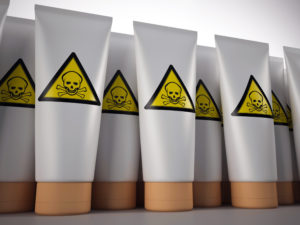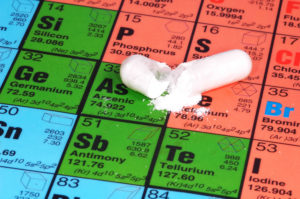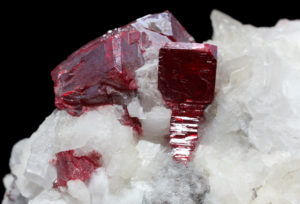Many queens and noble ladies may have thought they had beauty powerful enough to slay nations, but all that glitter often came with a steep price. They often didn’t know what they were doing; discoveries in chemistry weren’t always transparent to the public at large. Let us examine some of the most notorious makeup ingredients from history.
1. Arsenic
America saw in the late 19th century many predatory superlatives in advertisements for Dr. James P. Campbell’s Safe Arsenic Complexion Wafers. These cakes were marketed as the remedy for freckles, black-heads, pimples, vulgar redness, yellow or “muddy” skins, lackluster eyes, low spirits, headache, hay fever, and much more. What was worse was that the product was labeled “guaranteed absolutely safe and harmless to anybody.” Upon being consumed beyond the tolerance level, the wafers would render the user’s face deathly pale. It wasn’t like the world was in the complete dark about the destructiveness of arsenic, either; there were serial killers in the Victorian era who were already using arsenic to murder their victims.
2. Mercury
Catherine de’ Medici, the French queen famous for being sidelined in her own marriage, was also famous for her sense of fashion (the epitome of which was her perfumed gloves). She applied to her face makeup that consisted not just of lead and arsenic, but also mercury.
Ancient Greek women also fell prey to mercury-based makeup. For their rouge, they used vermilion, a red pigment made from powdered cinnabar, which is a red form of mercuric sulfide. Over a prolonged period of time, the poison would have taken its toll on its users.
3. Lead
It would seem that in Europe during the sixteenth century, lead wasn’t just busy poisoning painters, but also women of the aristocracy. Among the most fashionable lead makeup products was the Venetian ceruse (otherwise known as “spirits of Saturn”), which was made up of white lead. Published in 1688, Magistery of Saturn or Lead highlights the uniqueness of the foundation in this way:
“…be sure to chuse a true Ceruse of Lead, such as we call Venetian Ceruse, and not that which is counterfeited, as being mixed with Chalk, Whiting, or other Substances, having neither the brittleness, weight, nor whiteness of the true Ceruse, or that of Venice.”
Queen Elizabeth I also covered her smallpox scars with Venetian ceruse. Sadly, in many cases, the prolonged usage of the product led to the discoloration, withering, and graying of skin, which in turn led to even more usage of it (to cover up the effects). In ancient Egypt, many women and men wore eyeliners composed of lead, and perished before they reaches their 30s.
Conclusion
It’s ironic that folks who were less privileged ended up using the products and remedies that were much more healthful. Rather than rush to groom and powder, let us stare into the mirror every now and then and cherish the natural complexion given to each one of us. For professional and non-poisonous makeup services, contact Beauty Studio Inc Mobile Hair and Makeup!




April 24, 2019 at 12:11 pm
Pretty nice post. I just stumbled upon your blog and wanted to
say that I have really enjoyed surfing around your blog posts.
After all I’ll be subscribing to your feed and I hope you write again very soon!
May 16, 2019 at 10:46 pm
Very nice post. I just stumbled upon your blog and wished to mention that I have really enjoyed surfing around your blog posts. In any case I’ll be subscribing on your feed and I am hoping you write once more soon!